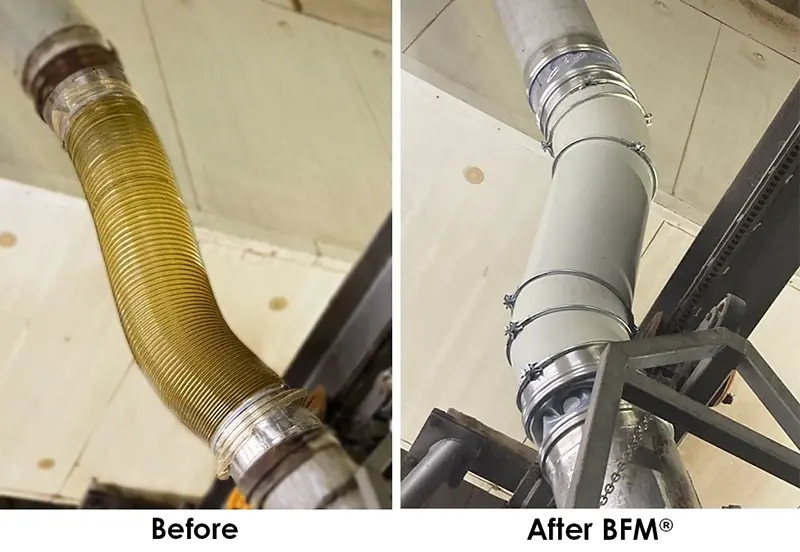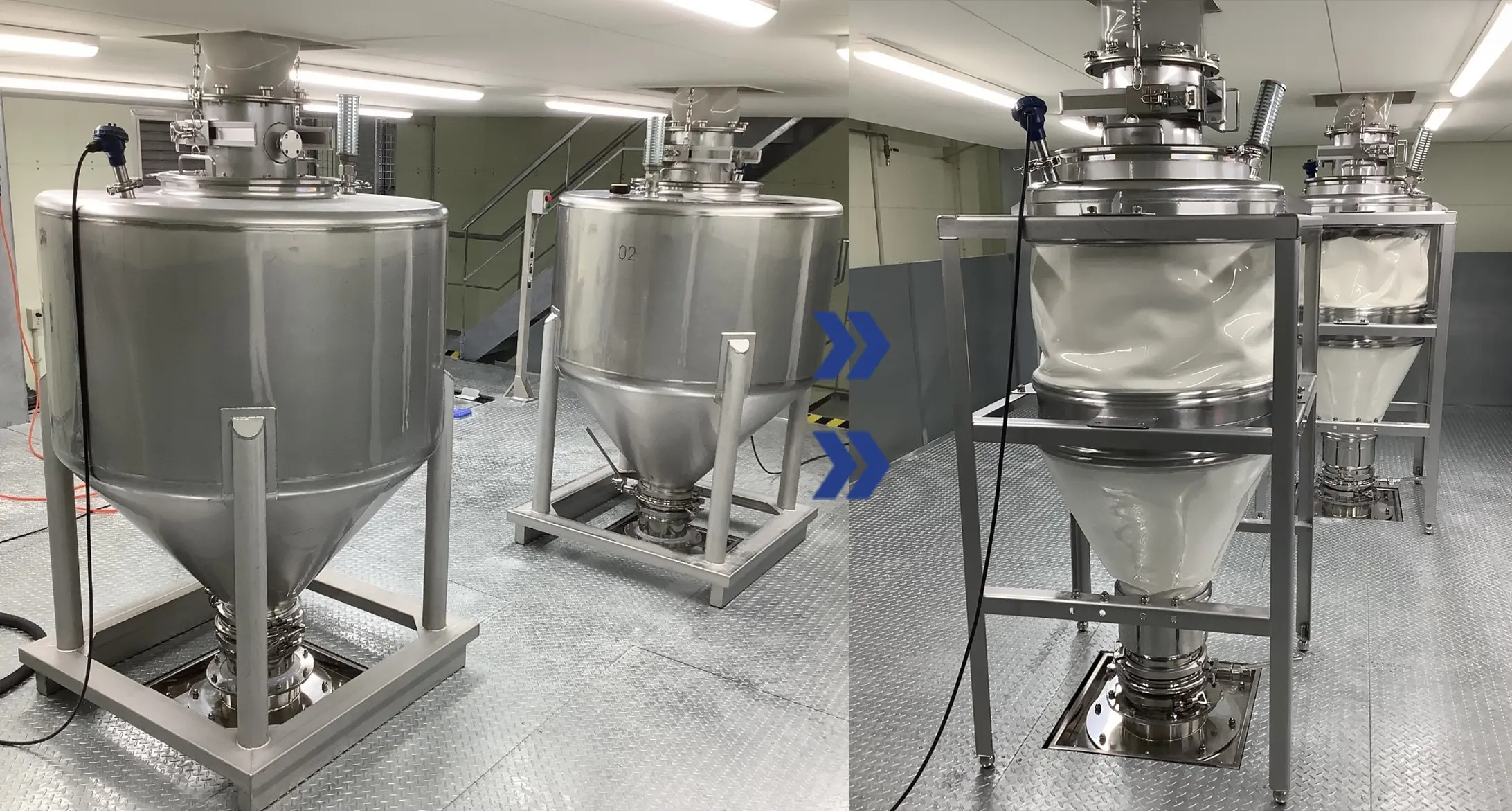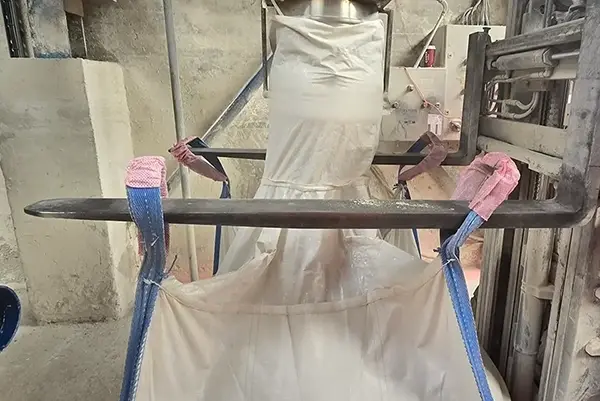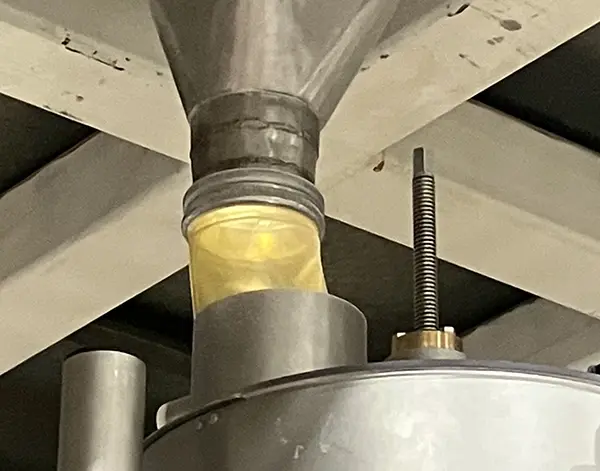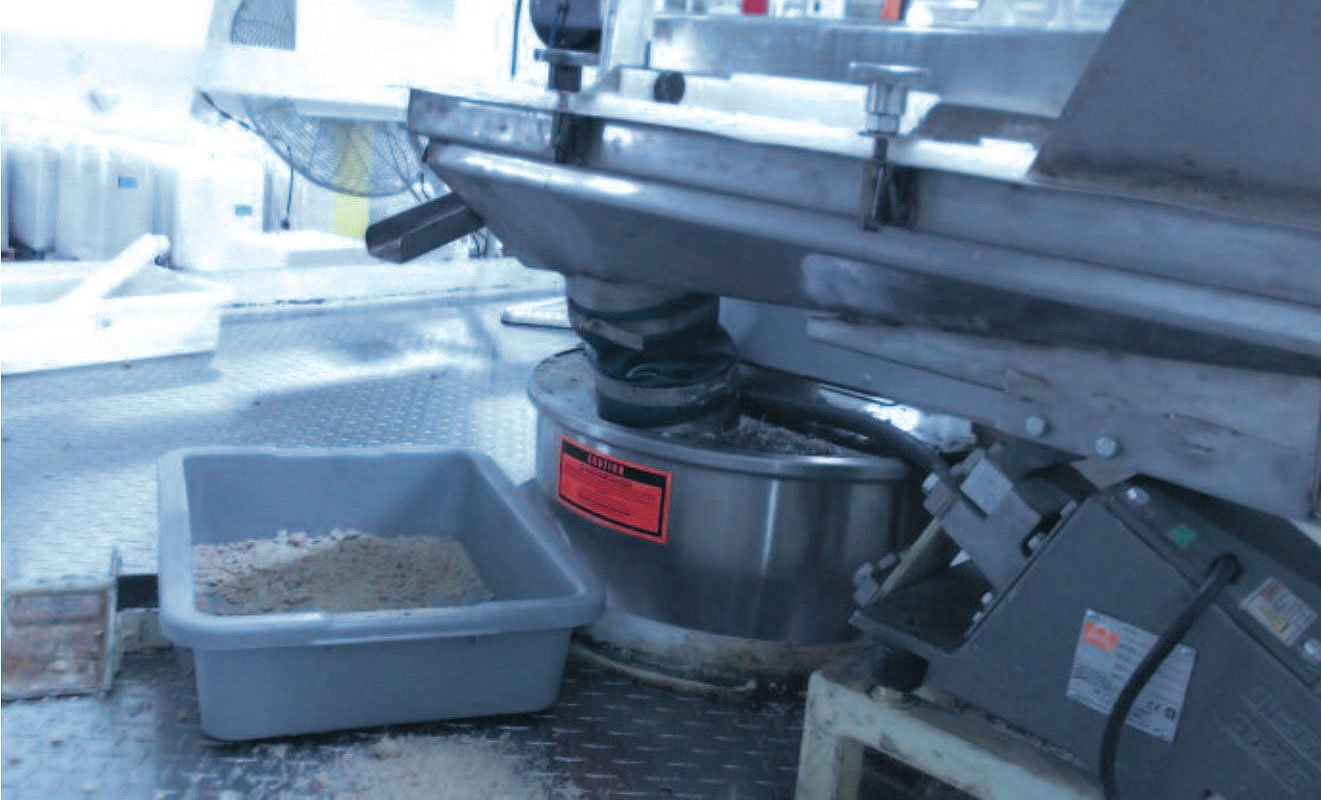 Bob’s Red Mill Natural Foods Inc, USA, mills a range of flours, meals and cereals 24 hours a day, 6 days a week.
Bob’s Red Mill Natural Foods Inc, USA, mills a range of flours, meals and cereals 24 hours a day, 6 days a week.
Since starting operations, the company had connected equipment in the process lines, which includes mills, screeners, packaging machines, and other equipment, with standard clamp-and-sleeve connectors. However, these connectors leaked dust into the facility and required a lot of time and labour to remove from the line when cleaning the equipment between product runs. The company needed to find a better way to connect the process equipment to eliminate dust leaks and reduce maintenance.
Clamp-and-sleeve connectors cause problems
The company operates 13 stone grinding mills, each producing about 900 pounds of various flours or meals per hour. The products moves from a mill to a horizontal vibratory screener that discharges it at a controlled rate to a packaging machine’s auger feeder via a clamp-and-sleeve connection assembly.
Since each packaging machine is designed to package more than one product, operators must thoroughly clean the screener and feeder between product runs to prevent cross-contamination. To access the equipment interiors, operators used a screwdriver and wrench to loosen a connector assembly’s clamps and remove the sleeve. After cleaning the equipment, operators reinstalled the connectors, repeating this process several times each shift to ensure product quality.
According to Bo Thomas, Bob’s Red Mill superintendent of engineering and maintenance, the clamp-and-sleeve connectors required a lot of maintenance and leaked product into the facility. “The clamps were a pain because some of them were difficult to access because of where they were located,” says Thomas. “And the time it took to remove and reinstall the connectors reduced our packaging efficiency. Fugitive dust also occasionally escaped onto the equipment through the connection points, causing safety, housekeeping, labour, and product-loss problems. Additionally, an operator could unknowingly install a sleeve so tight between the equipment that the vibration from the screener would transfer to the auger feeder. This was a problem because the vibration caused the material to dribble out of the feeder and throw off the bag weights.”
A standard clamp-and-sleeve connector between the vibratory screener’s discharge and auger feeder’s inlet often allowed material to leak out onto the equipment, creating housekeeping and maintenance problems.
Connecting with a solution at food expo
Thomas first saw the unique snap-fit BFM® fittings at a food expo.
“When we saw the fittings, we knew they’d improve the equipment cleanout time,” says Thomas, who immediately ordered two custom BFM® connector fittings from the supplier. After receiving the flexible connector sleeves and spigots, the company’s maintenance crew disassembled the existing connectors, welded the spigots in place on the screener discharges and feeder inlets, and snapped in the connector sleeves.
Connector fittings improve mill’s production operation
Since installing the two connector fittings in the packaging lines, the time it takes the operators to remove them to clean the equipment has been significantly reduced, which has helped decrease maintenance requirements and improve the packaging operation efficiency. “The fittings are easy to maintain and are completely tool-free,” says Thomas. “The operators just pop them out, clean out the equipment, and then pop them back in; they’re so easy to use. And because the fittings are a set length, they install the same way every time, so there’s no longer a potential for them to be installed too tightly, which ensures that vibration is never transferred to the feeders.”
Thomas admits that the fittings are little more expensive than clamp-and¬-sleeve connectors, but says that they’re worth it, especially considering the time and money the company has saved on maintenance, cleaning, and labour.
“They’re one of the best things that we’ve found; there’s nothing negative about them at all,” he says. “Since installing the first two fittings, we’ve been replacing all of the remaining clamp-and-sleeve connectors in the facility BFM® fittings. We have more than fifty installed throughout the plant at this time. I’ve been putting them everywhere there’s a transfer point because they make things so much easier for our operators.”
Take a look at more BFM® fitting applications in the food industry.
Supplied courtesy of BFM® fitting Distributor Powder Solutions Inc., USA
